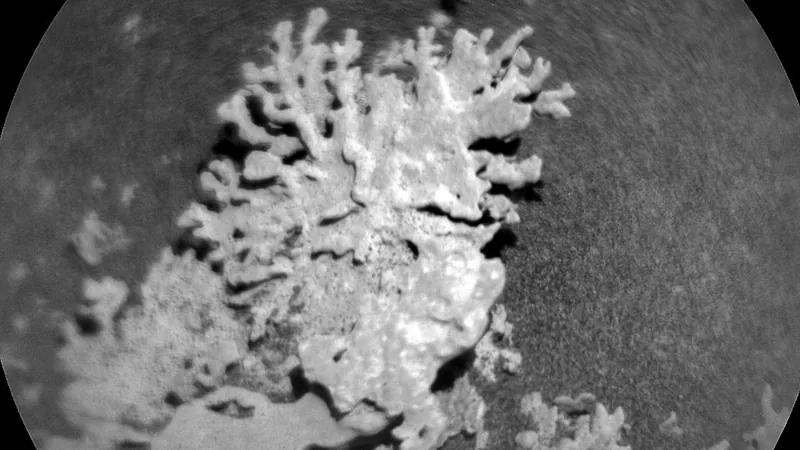
NASA Discovers Ancient 'Coral' on Mars: A Glimpse into the Red Planet's Mysterious Past
2025-08-07
Author: Ming
Curiosity Rover Unveils Mind-Boggling Find
In a groundbreaking discovery, NASA's Curiosity rover has captured stunning images of what remarkably resembles coral on Mars. This peculiar formation was spotted in the Gale Crater on July 24, sparking excitement and curiosity among scientists and enthusiasts alike.
Not Really Coral, But Remarkably Similar
While it may appear like a piece of coral to the untrained eye, the object is actually a small, light-colored rock, shaped by the relentless forces of wind erosion over millions of years. NASA shared a striking black-and-white image, taken with Curiosity's high-resolution Remote Micro Imager, showcasing the intricate details of this rock, which measures around 1 inch (2.5 centimeters) wide.
A Peek into Mars' Watery Past
According to NASA, these coral-like formations began forming billions of years ago during a time when Mars was still a water-rich world. The ancient Martian seas were teeming with dissolved minerals, which slowly seeped through the planet's rocks, creating solid mineral veins over eons. Today, erosion by harsh winds has sculpted these veins into what we now see as coral-like structures.
Explorations in Gale Crater: More Strange Finds
Curiosity's discovery isn't a lone oddity. The rover also encountered other unusual rocks, such as "Paposo," a strangely-shaped specimen measuring about 2 inches (5 cm) across, and a tiny, flower-shaped object photographed in the same region in 2022. These anomalies raise intriguing questions about the geological history of Mars.
Curiosity's Ongoing Mission
Since landing in Gale Crater in 2012, Curiosity's mission has been to scour the Martian surface for signs of past habitability. With a journey covering approximately 22 miles (35 kilometers) of the crater's 96-mile-wide (154 km) expanse, the rover’s slow, meticulous path involves drilling into rocks, collecting samples, and gathering crucial data to piece together the planet's ancient secrets.



 Brasil (PT)
Brasil (PT)
 Canada (EN)
Canada (EN)
 Chile (ES)
Chile (ES)
 Česko (CS)
Česko (CS)
 대한민국 (KO)
대한민국 (KO)
 España (ES)
España (ES)
 France (FR)
France (FR)
 Hong Kong (EN)
Hong Kong (EN)
 Italia (IT)
Italia (IT)
 日本 (JA)
日本 (JA)
 Magyarország (HU)
Magyarország (HU)
 Norge (NO)
Norge (NO)
 Polska (PL)
Polska (PL)
 Schweiz (DE)
Schweiz (DE)
 Singapore (EN)
Singapore (EN)
 Sverige (SV)
Sverige (SV)
 Suomi (FI)
Suomi (FI)
 Türkiye (TR)
Türkiye (TR)
 الإمارات العربية المتحدة (AR)
الإمارات العربية المتحدة (AR)